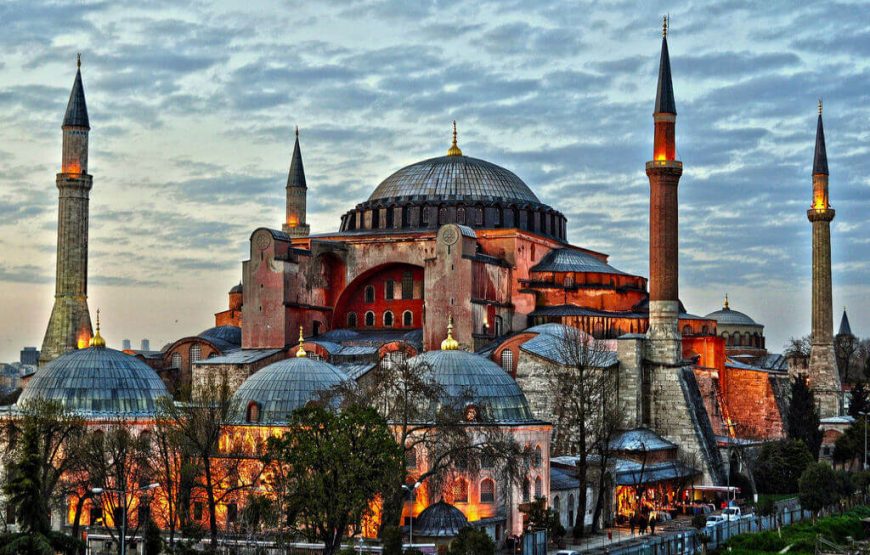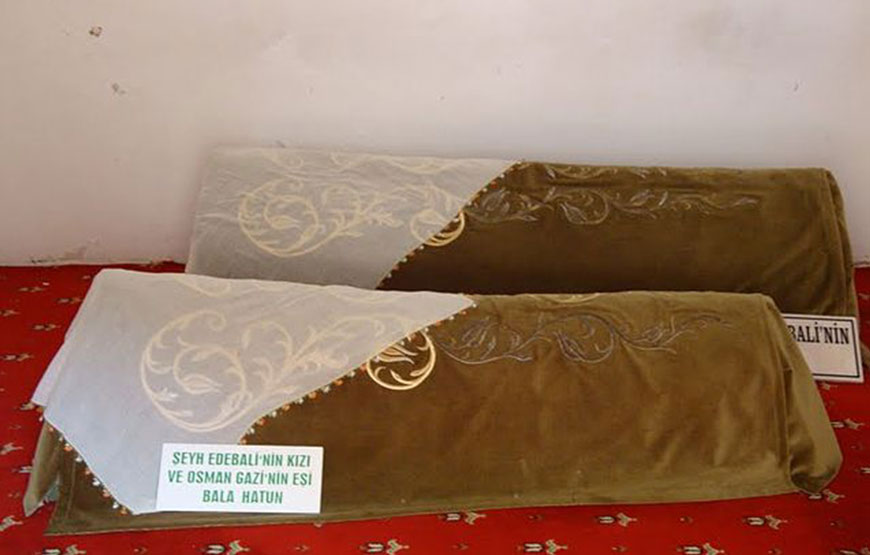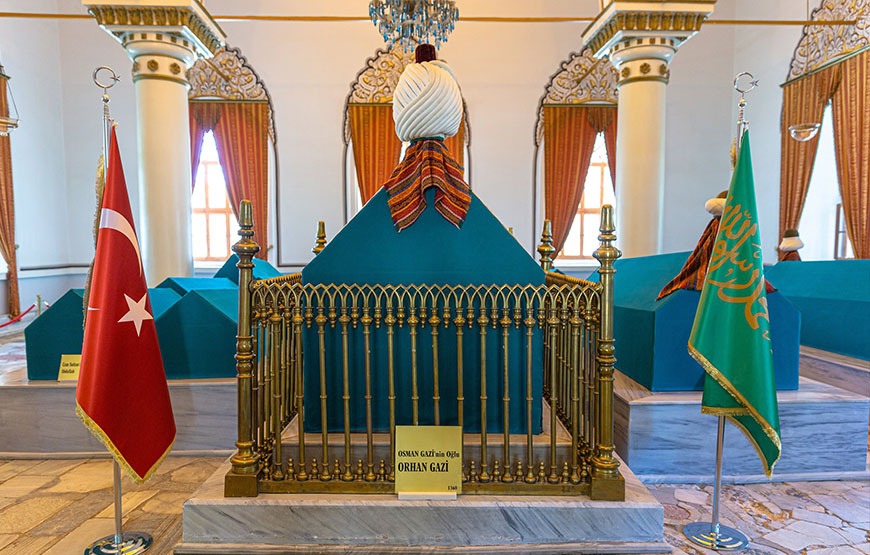from 0 review
1 DAY
Daily Tour
Unlimited
English, Turkish, Urdu


Travel through time on a full-day tour of Istanbul, and see the main monuments from the Byzantine and Ottoman Empires. Following a pick-up from your hotel, transfer to the Hippodrome, site of major political life and sports activities during the Roman and Byzantine Empires. Marvel at the last remaining monuments at the complex, including the Obelisk from Egypt and the Serpentine Column from Delphi. Next, go to the Church of St. Sophia, also known as the “Church of Holy Wisdom,” and “Hagia Sophia.” One of the world’s architectural masterpieces, the former church and mosque is now a museum of artifacts from Byzantium. Continue to the Blue Mosque to see the city’s icon up close. Famed for its stunning Iznik tiles, the building’s graceful minarets can be seen from many points in the city. Next, explore the narrow lanes of the Grand Bazaar, the oldest and largest covered market in the world. Discover decorative jewelry, leather work, souvenirs and carpets in more than 4.000 shops. Your next stop will be Top Kapi Palace, former residence of the Ottoman sultans, now home to an exquisite collection of crystal, silverware, and Chinese porcelain, as well as robes worn by the sultans, and the jewels of the Imperial Treasury. Then, head to Sultans Tombs. Made up of 5 tombs of the Ottoman Sultans, within the graveyard at St. Sophia, these ceramic panels are the most beautiful examples of the 16th century with purple, green, blue and red flower motives. The prince’s robes and a small piece from the Kaaba covers are displayed on the sarcophaguses. Please note, Sultans Tombs are closed on Monday and will be replaced with a visit to the Little Hagia Sophia Mosque.

Sheikh Edebali (1206-1326, Turkish: Şeyh Edebali, real name: İmâdüddin Mustafa bin İbrâhim bin İnac el-Kırşehrî) also referred as Balışeyh, was a highly influential Ottoman Sunni Sheikh of the Ahi brotherhood, who helped shape and develop the policies of the growing Ottoman State.

BalaHatun (wife of Osman Ghazi) And balaHatun mother tomb. RabiaBalaHatun died January 1324 birth name Rabia) was the second wife of Ottoman Sultan Osman I.She was the daughter of the famous Sheikh Edebali and the mother of Alaeddin Pasha of the Ottoman Empire.

Orhan Ghazi also spelled Orkhan, c. 1281 – March 1362) was the second bey of the Ottoman Beylik from 1323/4 to 1362. He was born in Söğüt, as the son of Osman.
In the early stages of his reign, Orhan focused his energies on conquering most of north-western Anatolia. The majority of these areas were under Byzantine rule and he won his first battle at Pelekanon against the Byzantine Emperor Andronikos III Palaiologos. Orhan also occupied the lands of the Karasids of Balıkesir and the Ahis of Ankara.

SöğütErtuğrulGazi Museum is a museum in Söğütilçe of Bilecik Province, Turkey. Söğüt is notable as being the town from which the Ottoman Empire originated. Ertuğrul, the father of the Osman I, has a tomb in Söğüt. Although bearing his name, the museum building is not in the same quarter of Söğüt.

Ertugrul Ghazi is a historical figure dating back to the 13th century, who belonged to the 'Kayi tribe' and fought for his religion, conquering many lands in the way of Allah. He was the son of Suleyman Shah of Oghuz descent. Ertugrul's son, Osman, succeeded the throne and founded the Ottoman Empire around 1299.

Tomb of Gündüz Bey (far-left). Burial place, Turgutalp (Genci) village, İnegöl, Turkey. Family, Kayı tribe of Oghuz Turks. Gündüz Alp was the likely father of Ertuğrul (13th century) and grandfather of Osman I, the Family tree in Âşıkpaşazâde's History of Âşıkpaşazâde: Sunkur-Tekin, Ertuğrul, Gündoğu, Tündar (Dündar).
A travel agent takes all of the headache out of planning a trip and handles virtually all aspects of your travel, at absolutely no cost to you. The combined experience of the team and the feedback from our thousands of travelers provides an invaluable resource to the traveler planning an important trip.
Yes, we work within any and all realistic budgets, and an honest sharing of ideas and goals helps us immensely when making recommendations and suggested edits to travel plans.
No, there is no fee for our vacation planning services as the travel vendors involved recognize our value and compensate us from the gross amount paid (what you would have paid even without our assistance). For those complicated international itineraries that require custom crafting and significant involvement of our international on-location partners, we do request an intent-to-travel deposit to begin the process. This deposit is applied to the reservations that are made on your behalf.
Call us right away.
Alamgir Tours products can only be booked online or over the phone. It is recommended you pre book your travel services to avoid disappointment as many of the tours and products are popular, and can be sold out early. If you wish to wait and book at the destination, you can do this, but we would like to remind you that last minute bookings (last 3 days before the departure date of the services) can not be done online.
Leave a review